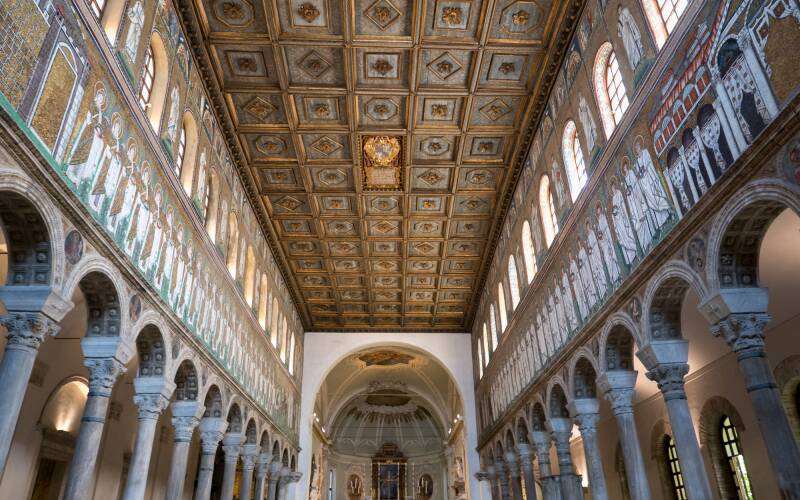- Search magazine...
- Magazine by Category
- Magazine by Region
- article detail
- Search magazine...
- Magazine by Category
- Magazine by Region
- article detail
Ravenna is a seaside resort with 29 kilometers of coastline and a lively harbor. The city is well known for being the capital of mosaics, so much that is was included in the list of UNESCO (World Heritage List) for its various Christian religious monuments scattered in different areas, which have an extraordinary historical and artistic importance.
Since the capital of the Western Roman Empire was moved from Milan to Ravenna in 401 AD, due to the fact that the Emperor Honorius wanted to move to a more safe place, the city abandoned the provincial aspect in order to become a sumptuous residence. Since then Ravenna was elected as capital twice: the Kingdom of the Ostrogoth and then the Byzantine Empire.
UNESCO lists even eight monuments that have allowed Ravenna to portray this recognition. One of these is the Masuoleum of Galla Placida, most likely built in the fifth century, by an empress who wanted to built a family tomb with rich, mosaic complex with classical style.

The variety of colors ranging from blue peacock, orange, green moss and even gold, make the harmony of the work even more striking. The Neonian, also called the Orthodox Baptistery, is another famous masterpiece, followed by no less fascinating Mausoleum of Theodoric.
A huge monolith of 300 tons together with large stone blocks of Istria cover the Baptistery of the Orthodox, around the fifth century. The building impresses with polychrome decoration of the mosaics which cover the dome.
Another magnificent dome is the one of the Arian Baptistery, built by Theodoric for the Arian cult in Italy.

The list of monuments stretches with the Basilica of Sant’ Apollinare Nuovo, the Gothic quarter, consecrated to Catholic worship only around 550 more or less, of which the walls are completely covered with bright mosaics of classical Byzantine style. Many photographs of Ravenna often show the extraordinary images of marble decorations of the Basilica of San Vitale including the splendid mosaics in green and gold standing out from the presbytery and the apse. The basilica was built in 526.

Ravenna reserves artistic and historical treasures outside its walls: Sant’ Apollinare in Classe is known for the mosaic that depict the patron Saint of Ravenna immersed in a rural landscape.
These are monuments that in addition to the mosaic craftsmanship demonstrate what was a dense network of relationships between artist and religion.
Discover here Home in Italy’s ultimate collection of the finest villas allowing you an easy access to iconic museums, archeological marvels and World Heritage Sites.
Copyright © Home in Italy. All rights reserved.
vitti

8 4 6
Sicily, Acireale
from 11,200 to 19,600 € / week
balsamina

8 4 5
Sicily, Avola
from 8,950 to 14,900 € / week
nido nuovo

12 6 8
Sicily, Ragusa
Price On demand
villa mandorli

12 6 7
Tuscany, Montepulciano
from 7,150 to 11,600 € / week
cantico

8 4 10
Puglia, Fasano
from 20,000 to 35,000 € / week
villa reale di marlia

25 11 20
Tuscany, Lucca
Price On demand
verdiana

12 6 6
Sicily, Siracusa
from 15,600 to 21,950 € / week
merangola

12 6 8
Tuscany, Siena
from 14,000 to 16,000 € / week




